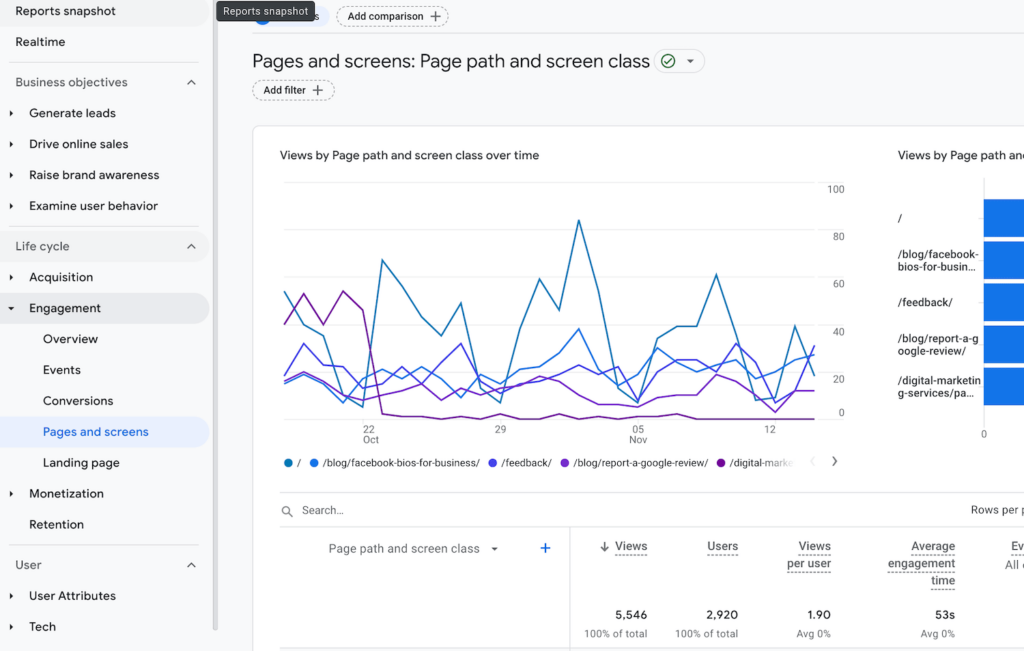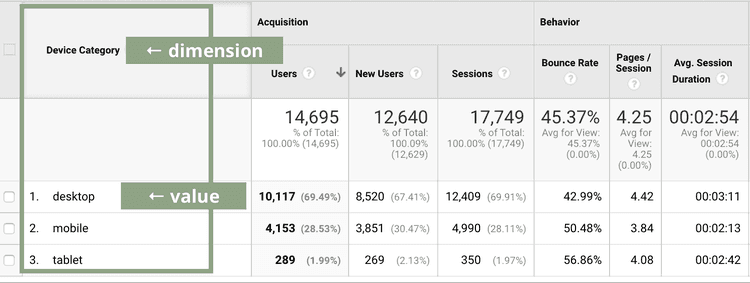Essential Knowledge: 'Secondary Dimensions' in Google Analytics Explained
Essential Knowledge: 'Secondary Dimensions' in Google Analytics Explained
Blog Article
Demystifying Additional Dimension in Google Analytics: The Secret to Understanding Your Information Like Never Ever Before
Amidst the variety of tools offered, Google Analytics stands out as a giant, yet lots of individuals remain unaware of the untapped potential existing within its Second Measurement feature. Comprehending the subtleties of Additional Measurement might be the missing item in your analytics puzzle, dropping light on fads and relationships that were formerly obscured.
Recognizing the Essentials of Additional Measurement
Additional dimensions in Google Analytics act as supplementary characteristics that provide deeper insights into main data metrics, boosting the total understanding of user behavior and communications on an internet site. By adding secondary measurements to your main information metrics, you can sector and examine your information better, discovering beneficial info that might have been concealed otherwise.
Understanding the basics of secondary measurements is crucial for enhancing your web site's efficiency and user experience. what is a “secondary dimension” in google analytics?. When using secondary dimensions, it is important to know that they can be contributed to numerous records in Google Analytics, enabling you to check out extra elements of your data beyond the standard dimensions
Additionally, additional measurements enable you to compare and contrast various data points, assisting you determine patterns, fads, and connections that can inform your marketing techniques and site optimizations. Whether analyzing web traffic resources, customer demographics, or behavior on certain pages, secondary dimensions play a crucial duty in removing purposeful insights from your Google Analytics data.
Applying Second Measurement in Reports
To strengthen the analysis of customer actions and interactions on a website, incorporating additional dimensions into records in Google Analytics gives a more extensive understanding of information metrics. By using additional measurements in reports, experts can discover beneficial understandings that surpass the surface-level information supplied by key measurements alone. This attribute enables users to section and pierce down right into their information better, disclosing correlations and patterns that might have or else gone unnoticed.
Via the application of second dimensions, users can gain a deeper understanding of the context bordering their primary information points. For instance, incorporating the main measurement of 'source/medium' with a secondary dimension like 'landing web page' can reveal which particular landing web pages are driving web traffic from different resources. This degree of granularity can aid marketers customize their approaches to maximize efficiency based on these in-depth understandings.
Studying Data With Second Dimension
Utilizing secondary measurements in information evaluation boosts the deepness of insights originated from Google Analytics reports. By adding a second dimension to your key data collections, you can discover valuable connections and patterns that could or else continue to be undetected. This additional layer of info permits even more nuanced interpretations of individual behavior, website traffic sources, and various other key metrics.
When evaluating information with additional dimensions, it is vital pop over here to concentrate on pertinent mixes that align with your certain objectives. For example, combining the key dimension of 'landing pages' with a secondary measurement like 'device category' can expose exactly how different gadgets impact the performance of numerous landing web pages. This kind of analysis can lead to actionable understandings, such as optimizing page layouts for specific devices to enhance overall customer experience and conversion prices.
Additionally, leveraging additional measurements allows you to segment and compare information better, giving an extensive sight of your website's efficiency from different angles. This complex method to data analysis empowers organizations to make informed decisions and tailor their strategies for maximum impact.

Advanced Techniques With Secondary Measurement
One advanced technique includes utilizing secondary dimensions to segment information even more, allowing a more granular evaluation of user behavior. Combining the main dimension of 'Source/Medium' with the additional measurement of 'Device Group' can reveal exactly how various tools add to web traffic from numerous sources.
Moreover, utilizing additional measurements together with filters enables more specific data adjustment. Filtering data by specific criteria and afterwards including second dimensions can provide a clearer image of user interactions based on numerous characteristics. This approach is especially helpful for identifying patterns or abnormalities within fractional data sets.
In addition, using secondary measurements in custom-made records or control panels can improve the analysis process and promote the tracking of crucial performance indicators across various measurements. By tailoring records with secondary dimensions, experts can concentrate on particular metrics customized to their special logical demands, improving the overall data analysis and decision-making process.
Enhancing Data Interpretation With Secondary Measurement
Enhancing information interpretation with second measurements in Google Analytics provides a much deeper understanding of individual behavior and insights right into vital performance metrics. what is a “secondary dimension” in google analytics?. By utilizing secondary dimensions, experts can segment and filter their data to reveal important patterns and patterns that could not be promptly apparent when taking a look at the data in its main kind. This enhanced degree of granularity permits a more thorough evaluation of user interactions on see this page a website or application
Additional dimensions can be specifically helpful in separating particular variables that may affect user habits, such as the source of web traffic, device type, or geographical place. By layering these additional measurements onto key information collections, analysts can acquire a much more nuanced point of view on exactly how various factors influence user involvement and conversion rates.
Final Thought
Finally, utilizing the secondary measurement feature in Google Analytics gives a much deeper degree of insight into site information by permitting customers to evaluate information from numerous viewpoints. By using additional dimensions in reports, examining information, and using advanced strategies, individuals can improve their information interpretation and make more enlightened decisions for their web sites - what is a “secondary dimension” in google analytics?. Recognizing and leveraging secondary measurements is crucial for obtaining an extensive understanding of internet site efficiency and user habits

In final thought, using the secondary measurement feature in Google Analytics provides a deeper degree of understanding right into site data by permitting users to analyze data from multiple viewpoints.
Report this page